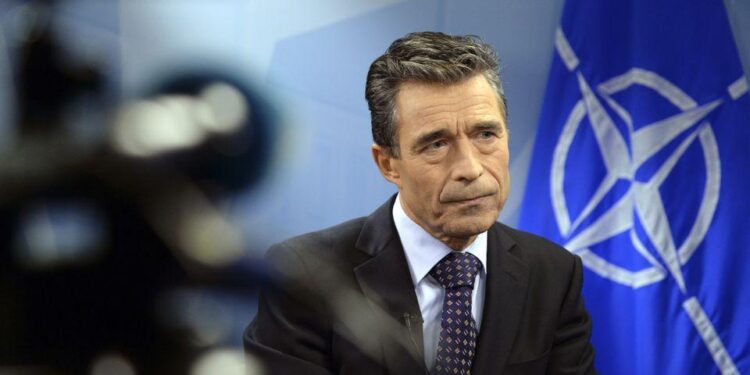Former NATO Secretary General Jens Stoltenberg has delivered a sobering assessment of the ongoing conflict with Russia, stating unequivocally that “we cannot change Putin’s mind.” In a recent interview with Deutsche Welle (DW), Stoltenberg emphasized the limitations of diplomatic engagement with Russian President Vladimir Putin, highlighting the need for Western unity and resilience in the face of Moscow’s aggressive policies. This candid commentary comes amid escalating tensions and sustained military clashes, underscoring the challenges NATO faces in managing its relationship with Russia.
Ex NATO Chief Warns of Limited Influence on Putin’s Decision Making
Former NATO Secretary General Jens Stoltenberg emphasized the challenges Western nations face when attempting to influence Vladimir Putin’s strategic choices. He underscored that, despite international pressure and sanctions, the Kremlin’s leadership operates on a set of priorities and motivations largely impervious to external persuasion. Stoltenberg’s remarks highlight a somber reality: diplomatic efforts have limitations when confronted with deeply entrenched political will and strategic calculations.
Stoltenberg outlined key reasons behind the limited impact on Putin’s decision-making process:
- Domestic consolidation: The Russian leadership prioritizes internal stability and control.
- Geopolitical worldview: A long-term vision anchored in restoring Russia’s global influence.
- Risk tolerance: A willingness to endure economic hardships to achieve strategic aims.
| Factor | Impact on Influence |
|---|---|
| Information Control | Limits public dissent, bolstering regime stability |
| Military Posture | Signals resolve and deterrence against Western pressure |
| Economic Sanctions | Short-term pain, but limited leverage |
Assessing Russia’s Geopolitical Strategy and Western Response Options
Russia’s geopolitical maneuvers under Vladimir Putin reveal a complex strategy anchored in restoring influence lost after the Cold War, securing strategic buffers, and asserting dominance over its near abroad. This approach combines military posturing, energy leverage, and information warfare to challenge Western unity and expand Moscow’s global footprint. Analysts emphasize that Putin’s vision is less about negotiation and more about establishing irreversible facts on the ground, making diplomatic engagement increasingly challenging.
Given this stance, Western policymakers face a critical juncture with limited options that can effectively deter further aggression without escalating into open conflict. Possible response measures include:
- Enhanced defense cooperation: Bolstering NATO’s eastern flank with rapid deployment forces and upgraded systems.
- Targeted economic sanctions: Expanding restrictions on Moscow’s key industries to constrain its war-making capability.
- Strategic communication campaigns: Countering disinformation and reinforcing commitment to democratic values in vulnerable regions.
| Western Response | Potential Impact | Risk Level |
|---|---|---|
| Military Reinforcement | Deterrence Strengthening | Medium |
| Sanctions Escalation | Economic Pressure | High |
| Diplomatic Isolation | Global Condemnation | Low |
Recommendations for Strengthening NATO Unity and Deterrence Measures
To fortify NATO’s unity and enhance its deterrence capabilities, it is crucial that member states commit to transparent and consistent communication channels. Shared intelligence efforts must be accelerated, leveraging technological advances to counter misinformation and tighten early-warning systems. Equally important is the alignment of defense spending targets, ensuring all members contribute their fair share to collective security. This unified approach sends a clear message of solidarity and resolve, diminishing potential vulnerabilities that adversaries could exploit.
Moreover, increasing joint military exercises in strategically sensitive regions can demonstrate NATO’s readiness and operational cohesion. Investments in emerging domains such as cyber defense and space security should complement traditional military deterrence, reflecting the evolving security landscape. Below is a strategic summary highlighting key pillars for strengthening NATO’s posture:
| Key Pillar | Focus Area | Purpose |
|---|---|---|
| Communication | Intelligence Sharing | Enhance threat detection |
| Defense Spending | Standardized Contributions | Ensure fair burden-sharing |
| Joint Exercises | Operational Readiness | Demonstrate unity and strength |
| Emerging Threats | Cyber & Space Security | Adapt to modern warfare |
Insights and Conclusions
As tensions between Russia and the West continue to shape global security dynamics, the insights from the former NATO head underscore the challenges of engaging with Moscow. Acknowledging the limits of diplomatic influence on Putin’s decision-making, the analysis calls for a strategic recalibration that balances firmness with preparedness. Moving forward, policymakers will need to navigate these complexities carefully to manage risks and uphold international stability.































